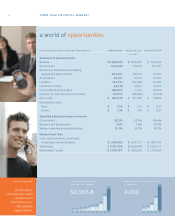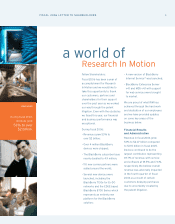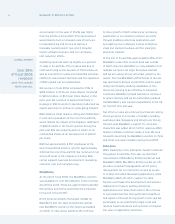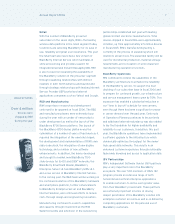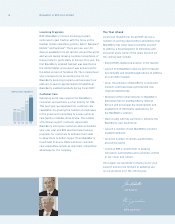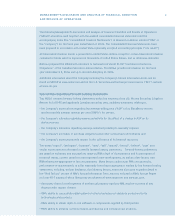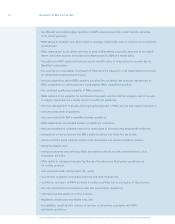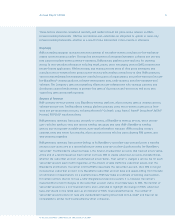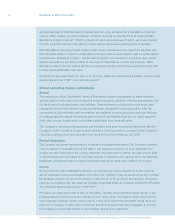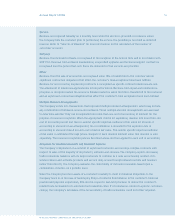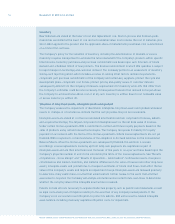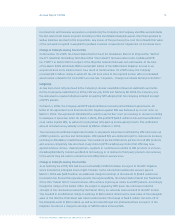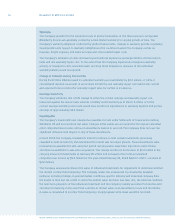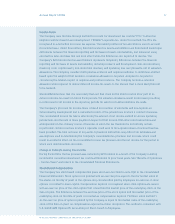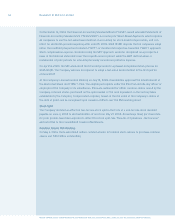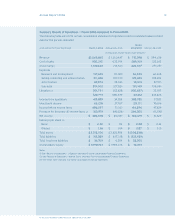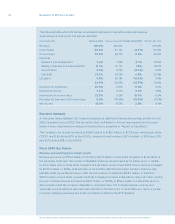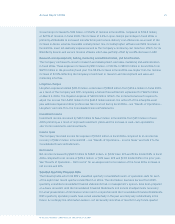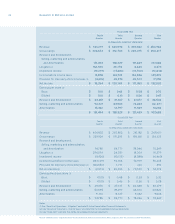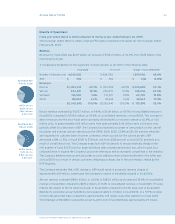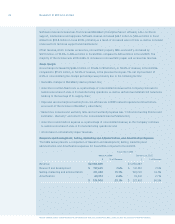Blackberry 2006 Annual Report Download - page 16
Download and view the complete annual report
Please find page 16 of the 2006 Blackberry annual report below. You can navigate through the pages in the report by either clicking on the pages listed below, or by using the keyword search tool below to find specific information within the annual report.
Research In Motion Limited
14
Research In Motion Limited • Incorporated Under the Laws of Ontario (In thousands of United States dollars, except per share data, and except as otherwise indicated)
Inventory
Raw materials are stated at the lower of cost and replacement cost. Work in process and nished goods
inventories are stated at the lower of cost and net realizable value. Cost includes the cost of materials plus
direct labor applied to the product and the applicable share of manufacturing overhead. Cost is determined
on a rst-in-rst-out basis.
The Company’s policy for the valuation of inventory, including the determination of obsolete or excess
inventory, requires management to estimate the future demand for the Company’s products within specic
time horizons. Inventory purchases and purchase commitments are based upon such forecasts of future
demand and scheduled rollout of new products. The business environment in which RIM operates is subject
to rapid changes in technology and customer demand. The Company performs an assessment of inventory
during each reporting period, which includes a review of, among other factors, demand requirements,
component part purchase commitments of the Company and certain key suppliers, product life cycle and
development plans, component cost trends, product pricing and quality issues. If customer demand
subsequently differs from the Company’s forecasts, requirements for inventory write-offs that differ from
the Company’s estimates could become necessary. If management believes that demand no longer allows
the Company to sell inventories above cost or at all, such inventory is written down to net realizable value
or excess inventory is written off.
Valuation of long-lived assets, intangible assets and goodwill
The Company assesses the impairment of identiable intangibles, long-lived assets and goodwill whenever
events or changes in circumstances indicate that the carrying value may not be recoverable.
Intangible assets are stated at cost less accumulated amortization and are comprised of licenses, patents
and acquired technology. The largest component of intangible assets is the net book value of licenses.
Under certain license agreements, RIM is committed to current and future royalty payments based on the
sales of products using certain licensed technologies. The Company recognizes its liability for royalty
payments in accordance with the terms of the license agreements. Where license agreements are not yet
nalized, RIM recognizes its current estimates of the obligation in Accrued liabilities on the Consolidated
Balance Sheets. When the license agreements are subsequently nalized, the estimate is revised
accordingly. License agreements involving up-front lump sum payments are capitalized as part of
intangible assets and are then amortized over the lesser of ve years or on a per unit basis based upon the
Company’s projected number of units to be sold during the terms of the license agreements. See “Results
of Operations – Gross Margin” and “Results of Operations – Amortization”. Unforeseen events, changes in
circumstances and market conditions, and material differences in the value of licenses and other long-lived
assets, intangible assets and goodwill due to changes in estimates of future cash ows could affect the fair
value of the Company’s assets and require an impairment charge. Intangible assets are reviewed quarterly
to determine if any events have occurred that would warrant further review. In the event that a further
assessment is required, the Company will analyze estimated undiscounted future cash ows to determine
whether the carrying value of the intangible asset will be recovered.
Patents include all costs necessary to acquire intellectual property such as patents and trademarks as well
as legal costs arising out of litigation relating to the assertion of any Company-owned patents. If the
Company is not successful in such litigation to protect its patents, RIM will review the related intangible
asset balance, including previously capitalized litigation costs, for impairment.


